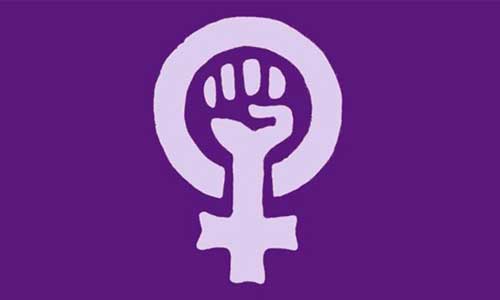Feminism is a range of social, political, and ideological movements that aim to define, establish, and achieve the political, economic, personal, and social equality between men and women. In the other word, feminism involves political and sociological theories and philosophies concerned with issues of gender difference, as well as a movement that advocates gender equality for women and campaigns for women’s rights and interests. Some feminists focus on social and cultural issues such as reproductive rights, domestic violence, maternity leave, equal pay, women’s suffrage, sexual harassment, and sexual violence, while others claim that the current social and cultural structures are based on superiority of men and so women are not treated fairly. They emphasize that women should be treated on the basis of humanity, not sex. According to feminists, the current differences between the two genders have been imposed by social and historical circumstances as human mind lacks gender characteristics. Many countries including Afghan citizens support moderate feminism so as to cut the chains of oppression against women and allow both ourselves and others to thrive. the young generation of Afghanistan believe that reaching to a developed and advanced society is beyond all forms of social and racial discriminations.
According to feminists and social science scholars, the history of feminism can be divided into three waves while each wave concentrate on certain dimension of women’s life and women demands. The first feminist wave was in the nineteenth and early twentieth century; the second was in the 1960s and 1970s, and the third extends from the 1990s to the present. Although some writers believe that there is also a forth wave of feminism which started since 2012 up to the date. The feminist theory emerged from these feminist movements or waves manifest in a variety of disciplines such as feminist geography, feminist history and feminist literary criticism.
As pointed out, the first-wave of feminism refers to an extended period of feminist activity during the nineteenth century and early twentieth century in western countries such as United Kingdom, the United States, Australian, News land and also some of Arabic countries. Originally it focused on the promotion of equal contract and property rights for women and the opposition to chattel marriage and ownership of married women (and their children) by their husbands. However, by the end of the nineteenth century, activism focused primarily on gaining political power, particularly the right of women’s suffrage. Yet, some feminists stress on legal and political equality between men and women and specifically they campaign for women’s sexual rights, reproductive rights, and economic rights. In Afghanistan, though the women have reached to some of these demands, they are seriously under threat if Afghanistan returns to the pasts, 1990s.
The second-wave of feminism refers to the period of activity in the early 1960s and lasting through the late 1980s. If we compare between the first and second-wave of feminism, the first wave focused on rights such as suffrage, whereas the second wave was largely concerned with other issues of equality, such as ending discrimination. the bigger difference between the first wave and second wave is that the second wave was more radical then first wave. The radical feminists in addition to stressing on social and political equality, they also raised many repulsive topic such as separation of women society, inherent hostility with men, human reproduction by modern devices which overall led to a reverse implication. Even, some of the radical feminists called the women not to sleep with men because men are the enemy of women. The second-wave feminism has continued to exist since that time and coexists with what is termed third-wave feminism as a reaction or opposition to the second radical wave.
Third-wave feminism began in the early 1990s, arising as a response to perceived failures of the second wave and also as a response to the backlash against initiatives and movements created by the second wave. Third-wave feminism seeks to challenge or avoid what it deems the second wave’s essentialist definitions of femininity, which according to them over-emphasize the experiences of upper middle-class white women. In clearer term, the third wave criticized that we cannot extend the experience and challenges of certain women to all women of the world. Therefore, third-wave feminists often focused on “micro-politics” and challenge the second wave’s paradigm as to what is, or is not, good for females. The third wave has its origins in the mid-1980s which contains internal debates between difference feminists such as the psychologist Carol Gilligan (who believes that there are important differences between the sexes) and those who believe that there are no inherent differences between the sexes and contend that gender roles are due to social conditioning.
Based on some divisions, as abovementioned, there is also a fourth wave which is also called post-feminism. This wave began since 2012 and its main concerns have been gender justice, gender harassment, street harassment, workplace harassment and overall violence against women. In regard to fourth wave of feminism, it has had more achievement and success in Afghanistan. Using the social media networks, many sexual corruption have been divulged by Afghan feminists in country. for example, the moral corruption video of Mullah Landi and many other scandals that were circulated in social media networks disclosed from universities, government offices, sports and security institutions while all are considered as achievement of the fourth wave of feminisms in Afghanistan.
Home » Opinion » Feminism and its implication in Afghanistan
Feminism and its implication in Afghanistan
| Mohammad Zahir Akbari

